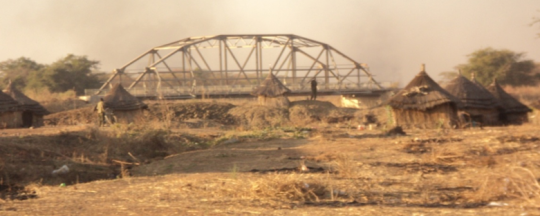The Governor of East Darfur General Mohammed Hamid Fadlalla today warned of outbreak of war between East Darfur and Northern Bahr El Ghazal should South Sudan fail to withdraw its troops from the disputed Samaha area, also known as ‘Mile 14’.
In an extensive interview with Radio Tamazuj on Tuesday, the governor called on the Sudan’s People Liberation Movement (SPLM), the ruling party in South Sudan, to order a withdrawal from the area to avoid war. He disclosed that there are Sudanese military units ready to recover Samaha by force from the SPLA 3rd Division. He declined to reveal the identities of these units, saying that they would be revealed in due time.
Samaha is a village and market about 2 kilometres north of the Kiir Adem Bridge over the Bahr El Arab River. The village is part of a disputed territory stretching south of the river to include grazing lands of seasonal importance to the Rizeigat tribe, the largest nomadic Arab tribe of Darfur. Historically, tribes of both Darfur and Bahr El Ghazal have interacted in this strip of forested grassland.
Fadlalla also asserted that historically, the region of Samaha belonged to East Darfur and had military presence of neither side. He described South Sudan’s occupation of the region as a call for war. He further claimed that the SPLA are abusing and blackmailing the civilians of Samaha and accusing them of being affiliated to Sudan’s National Congress Party. He called on the government of South Sudan to withdraw from the region to avoid a return to war.
In staking an uncompromising claim to Samaha, the governor joins with a number of other prominent tribal and government leaders from the Rizeigat who have earlier spoken out against the designation of Samaha as a ‘disputed area.’ These figures are raising their voices with urgency because Samaha could be put on the table at negotiations between Sudan and South Sudan in Addis Ababa.
Mohammed Hamid Fadlalla condemned the reported decision of African Union mediators to include the region in a list of disputed regions, saying that if the South wants to live peacefully, it should withdraw from Samaha. He called the designation ‘politically motivated’, noting that the region was not included in the Naivasha Agreement in 2005. The governor said that South Sudan is working to politicalize the current situation and negotiate by force, repeating once again that Samaha is not part of the disputed regions to be negotiated on.
In light of the Samaha dispute, international mediators have sought to clarify that they proposed the Bahr El Arab River only as a temporary security line rather than a permanent settled border. This failed to reassure top Rizeigat officials, at least two of whom publically threatened to liberate Samaha before the current round of negotiations.
The Samaha region is also referred to as ‘Mile 14’ because British administrators in 1924 delimited the Rizeigat dar (tribal homeland) at 14 miles south of the River Kiir/Bahr El Arab. This decision came to be known as the Munro-Wheatley Agreement. Ever since, the border has appeared on maps according to this line rather than the river.




